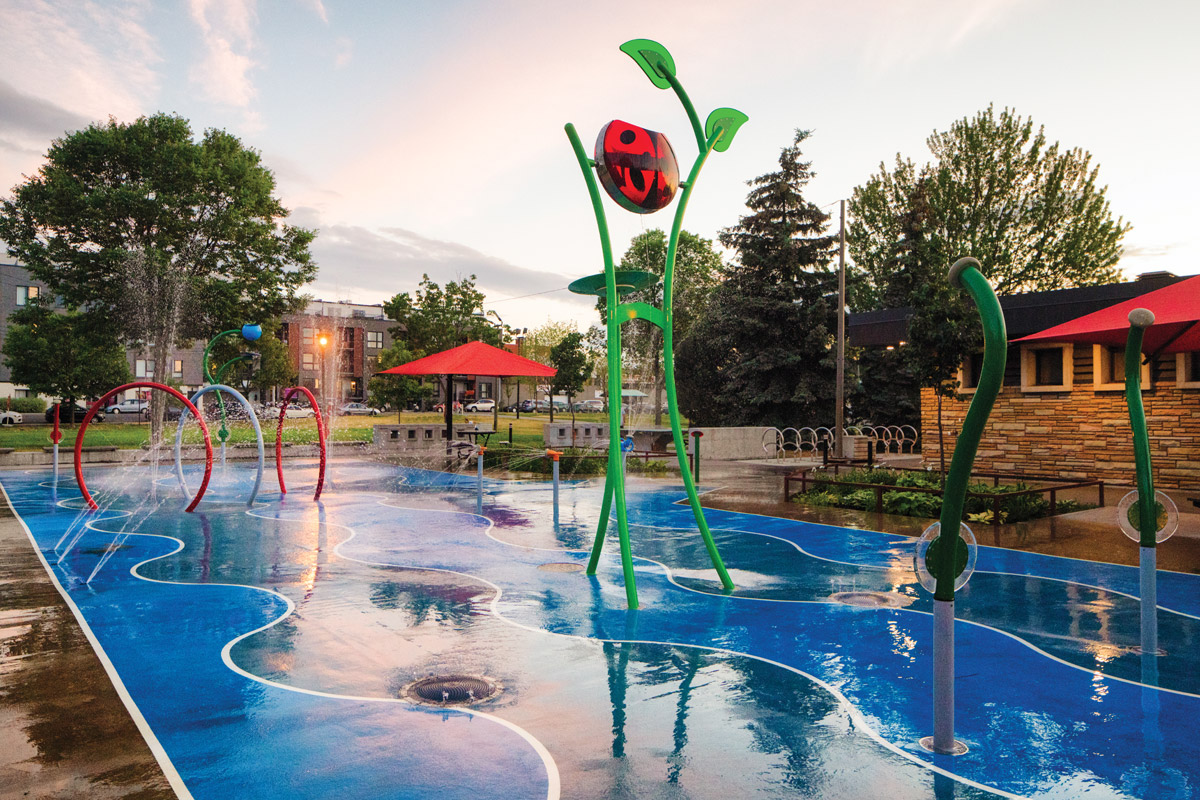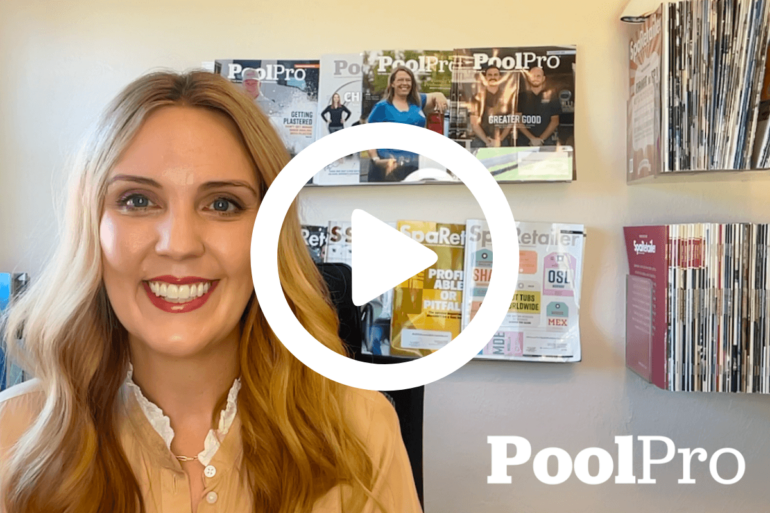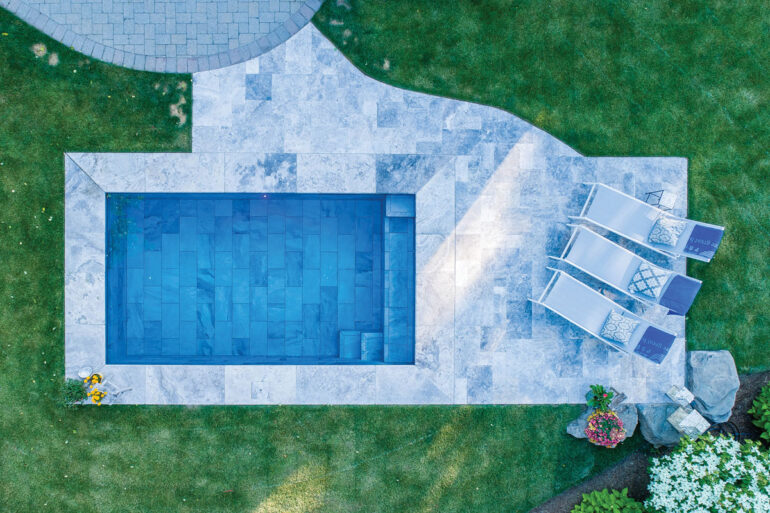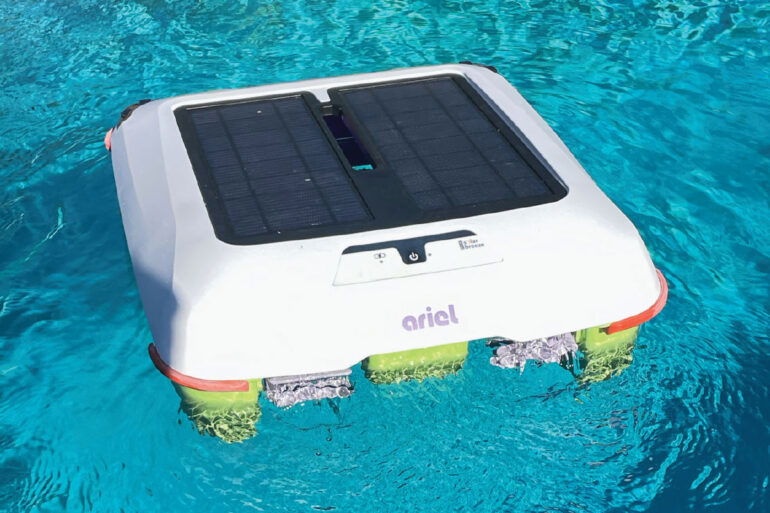Here to Spray

As someone who likes to have a finger on the pulse of our industry, I get a Google News alert for the search term “swimming pool” every day. You can probably guess the typical results: chlorine shortages, booming residential construction, drowning fatality reports, pool closures. But over the last five years, one story keeps appearing more and more frequently: organizations building spray parks or splash pads instead of a new pool.
From municipalities to malls, resorts, amusement parks, camps and even cruise ships, many types of organizations — including those with generous budgets — are opting for spray parks over swimming pools. You might even notice this in your community. If you are a service technician, it’s important to understand the key differences among these types of facilities, including the operational challenges and opportunities.
From municipalities to malls, resorts, amusement parks, camps and even cruise ships, many types of organizations— including those with generous budgets — are opting for spray parks over swimming pools.
Depending on the depth, a swimming pool poses a drowning hazard. The health code in most states and provinces carefully regulates public pool operations, safety equipment and even lifeguard requirements.
Spray parks and splash pads, however, are play structures and equipment sitting on flat or gently sloped surfaces. Water may collect to a depth of several inches as it puddles toward drains that are part of the overall circulation system, but the bather does not fully submerge. Instead, their body is sprayed by jets of water from play features activated by sensors or operating on a timed distribution system.
Let’s explore some of the reasons people are flocking to build spray parks.
Cost
The cost to build a spray park is a fraction of what is required to build even a small swimming pool. The main costs include the concrete pad (surface), a large vertical distribution pump and the water features. In addition to cheaper upfront costs, the annual operating costs are significantly less than a pool due to a much lower volume of water, chemicals, energy (spray parks are typically unheated) and wages in terms of operator hours.
Ease of Operation
Some states and provinces regulate a spray park as a commercial swimming pool: Water recirculates via transfer tanks, necessitating circulation pumps, chemical feeders and automatic controllers. Other jurisdictions are more lenient (because the bather does not fully submerge), allowing spray park systems to be dumped to waste at the end of each operating day. In the latter case especially, anyone without pool-operator training can easily turn on the spray park and monitor basic usage.
Safety
Drowning is a leading cause of unintentional death of children under age 10 in North America. Insurance companies like that there is no standing water at a splash pad, says Wyeth Tracey, founder of Empex Watertoys in Toronto, Ontario, Canada. “Parents like that kids can burn off all that energy, and they don’t have to [supervise].”
Novelty
Box swimming pools are everywhere, so a spray park can be a real differentiator in a competitive regional market. “If you offer splash pads with water toys, it’s a different presentation of water with nozzles, levers, knobs,” Wyeth says. “Kids are empowered to feel like they are participating, and it’s interactive. In a pool, you just sit around. Kids have a very short attention span, and will move around and play with their friends [at a spray park].”
Future Expansion
Spray parks are easy to expand or upgrade later if space is left on the pad. If an organization receives a $50,000 grant, it won’t go very far for a swimming pool — but will purchase a lot for a spray park.
For all the advantages for spray parks, there are some downsides when compared to swimming pools. As mentioned, spray parks can sometimes fall into a gray area where they are not subject to the same regulations as swimming pools. This creates at least two potential liabilities for owners and operators.
Recreational Water Illnesses (RWIs)
Bacterial outbreaks have been traced to spray parks, including a fatal case of Naegleria fowleri in Arlington, Texas, in 2021. Lower operating standards can mean young children, pregnant women, elderly people and other high-risk bathers are close to high levels of contaminants under sunny skies, where UV light quickly breaks down chlorine levels.
No Construction Standards
Like other specialty amenities such as water slides, many health codes rely on installation of equipment in accordance with manufacturers’ recommendations, and building codes may be absent. Spray-park construction rarely requires the same licensing as a swimming pool construction, and injuries can occur. Ohio is considering regulating water pressure after a 7-year-old girl experienced dramatic internal injuries at a spray park.
Additionally, there are not clear design standards to mitigate injuries from running and falling on wet concrete. “The reduction in injuries after applying a nonslip surface is significant,” says Dave Stephens of Prairie Surfaces in Winnipeg, Manitoba.
Limited Audience
One of the biggest limitations with spray parks and splash pads is that they serve a specific audience — typically children under age 10. Teens and adults don’t find the same value or recreation opportunities with spray park as they do a swimming pool. In a community with lots of young children and families, this may serve a significant need; in another, it may not be the right decision, irrespective of cost savings.
As a pool industry professional, it is your responsibility to be fully informed about all aspects of an amenity or upgrade that your client is considering. There is no best solution that is not tailored to a thorough understanding of your client’s needs.






